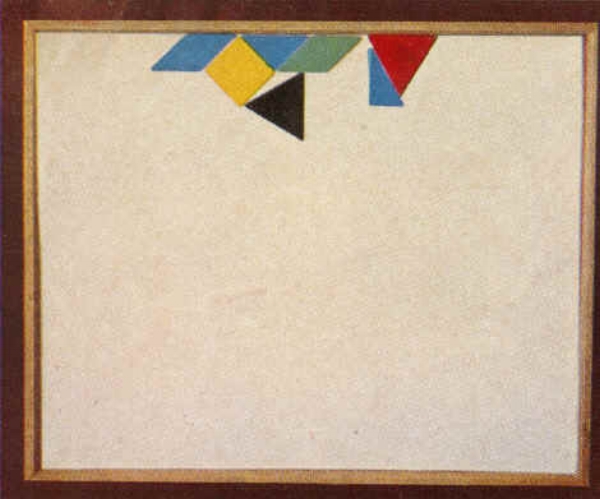Sample Mosaics From the Archives of the Institute of Child Psychology
A boy, aged 12 IQ over 110, the youngest of three sons, was referred to the Institute of Child Psychology for school refusal. enuresis. and nightmares. His father was a weak character who left his upbringing to the mother. Mother was depressive after mental treatment for two manic episodes; she clung to her ‘baby". refusing to acknowledge his developing independence. Mosaics recorded over 13 months of treatment show:
Mosaic 1 A small, haphazard collection of colours and shapes clinging to the top edge of the tray, indicating interior confusion and a need for external organization.
Mosaic 2 The rigid top section is neatly divided by a narrow strip from the confused lower part; the child is beginning to recognize a second aspect of his personality. In the upper part he is relaxed enough to feel free to "splurge". The lower part of separate fundamental patterns is typical of children under six.
Mosaic 3 His sense of self is developing and he is able to experiment with the five individual shapes. He succeeds in making something new with the green pieces, but has not developed further with the other pieces than the standard fundamental patterns.
Mosaic 4 A successful centralized pattern; the boy is now aware of the shape and area of the whole tray, and shows it in the four stars in the corners which do not touch the edge. He then builds on what he has already achieved, starting from the centre with four fundamental patterns which he then develops. He had just started at a new school, and when he had finished said that the mosaic reminded him of his school badge.
Mosaic 5 A creative design of flowers rooted in the ground; when it was pointed out that the right one did not fit, he was too lazy to move them.

